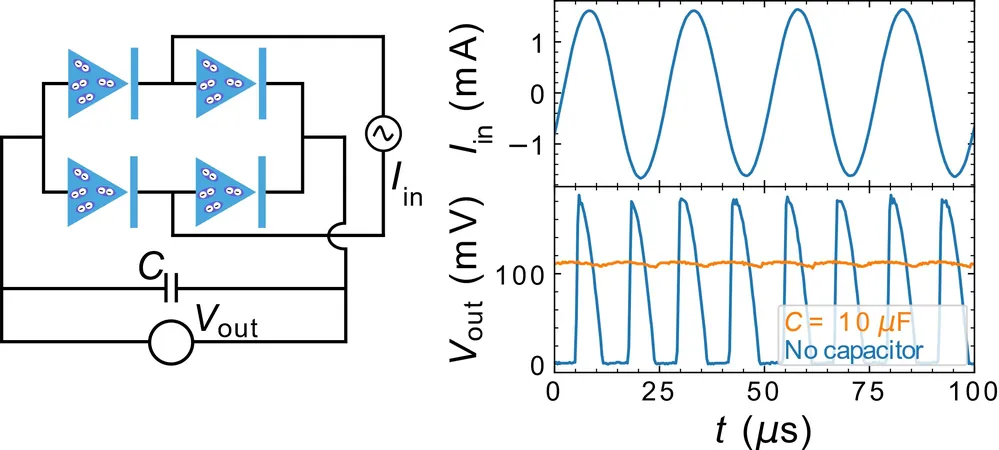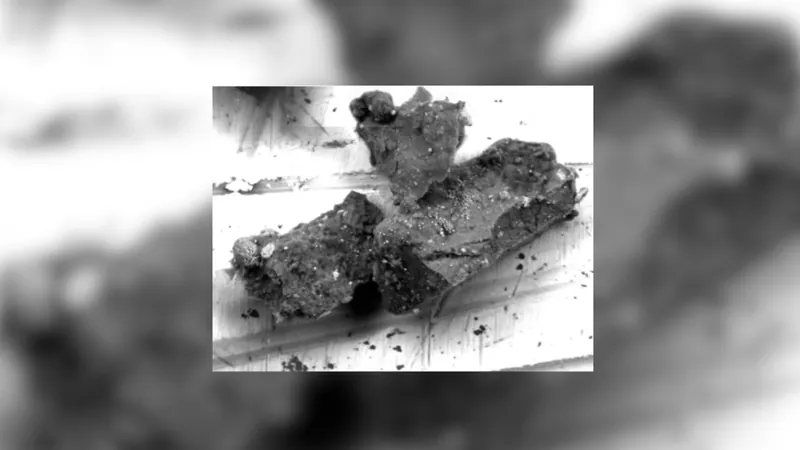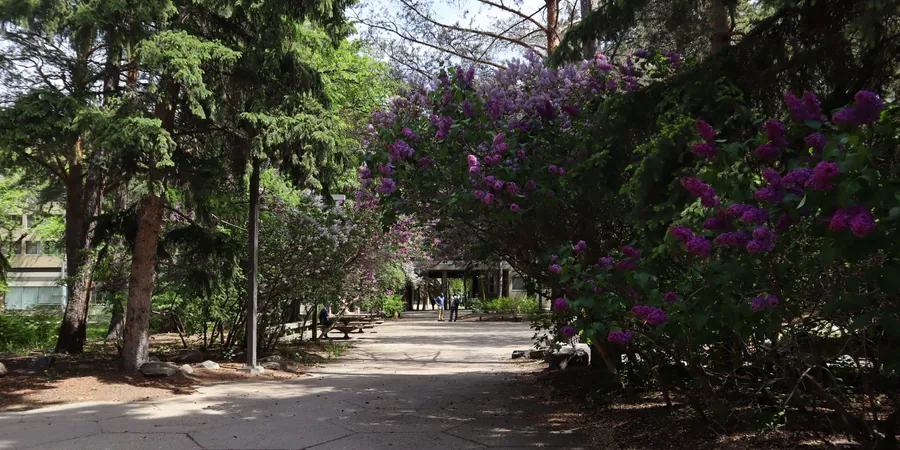
Revolutionizing Quantum Circuits: The Breakthrough Superconducting Diode Bridge
2025-05-28
Author: Amelia
In an electrifying breakthrough that could change the landscape of quantum technology, researchers from the Massachusetts Institute of Technology (MIT), University of California–Riverside, and SEEQC Inc. have unveiled a groundbreaking superconducting diode bridge. This innovative system efficiently converts alternating current (AC) to direct current (DC), and is set to redefine electronic components for both classical and quantum applications.
What Makes Superconductors So Special?
Superconductors are materials that exhibit zero electrical resistance at ultra-low temperatures, making them prime candidates for advanced electronic circuits. Their exceptional properties have sparked immense interest from scientists looking to push the boundaries of technology.
The Game-Changing Superconducting Diode Bridge
The newly developed superconducting diode bridge consists of four superconducting diodes (SDs) that allow current to flow in one direction. Published in the prestigious journal "Nature Electronics," this breakthrough has achieved stellar rectification efficiencies of up to 42% at cryogenic temperatures.
"Our research into superconducting diodes propelled us to address pressing technology needs," said Dr. Josep Ingla-Aynes, one of the lead authors. "Given their efficiency and reproducibility, we aimed to harness these SDs for practical applications, particularly in AC to DC conversion required for cryogenic circuitry."
Designing for Efficiency: The Technical Marvels of SDs
To enhance the efficiency of their diodes, the team implemented an asymmetrical design and applied a subtle out-of-plane magnetic field. This innovative approach culminated in a high-performing full-wave rectifier circuit, allowing for the inclusion of four efficient superconducting diodes on the same substrate—a feat not previously possible.
From Theory to Practice: Real-World Applications
Initial tests revealed that this advanced rectifier circuit efficiently converts AC to DC signals even at liquid helium temperatures, showcasing its practicality for powering DC-biased superconducting logic and quantum circuits. The introduction of on-chip rectifiers could streamline quantum computers, minimize power consumption, and enhance signal coherence.
The Future of Quantum Technologies
The potential consequences of this research are immense, paving the way for major advancements in quantum technologies. The superconducting diode bridge could soon be integrated into more complex quantum devices, including computers and detectors aimed at unraveling the mysteries of dark matter.
Looking forward, the authors aspire to refine the operation of SDs down to zero magnetic field, opening doors for unprecedented functionalities in superconducting circuits. The synergy between SDs and Josephson junctions could drastically reduce power needs in data processing and storage systems.
In a world of rapid technological evolution, this significant stride could set the stage for the next generation of quantum innovations!









 Brasil (PT)
Brasil (PT)
 Canada (EN)
Canada (EN)
 Chile (ES)
Chile (ES)
 Česko (CS)
Česko (CS)
 대한민국 (KO)
대한민국 (KO)
 España (ES)
España (ES)
 France (FR)
France (FR)
 Hong Kong (EN)
Hong Kong (EN)
 Italia (IT)
Italia (IT)
 日本 (JA)
日本 (JA)
 Magyarország (HU)
Magyarország (HU)
 Norge (NO)
Norge (NO)
 Polska (PL)
Polska (PL)
 Schweiz (DE)
Schweiz (DE)
 Singapore (EN)
Singapore (EN)
 Sverige (SV)
Sverige (SV)
 Suomi (FI)
Suomi (FI)
 Türkiye (TR)
Türkiye (TR)
 الإمارات العربية المتحدة (AR)
الإمارات العربية المتحدة (AR)